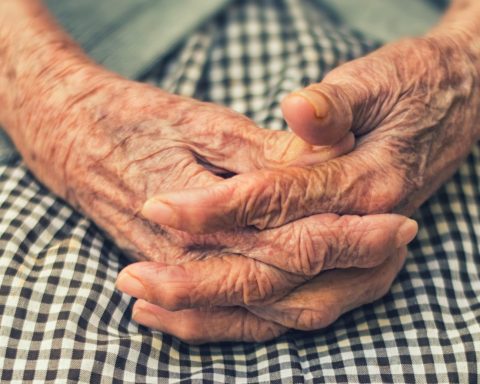 Sara Noden is an ST3 in General Practice and passionate about mental health
Sara Noden is an ST3 in General Practice and passionate about mental health
In the dynamic landscape of general practice, healthcare providers regularly encounter conditions that demand not only medical expertise but also a deep understanding of the human psyche. Among these conditions is the intriguing phenomenon of maladaptive daydreaming, where individuals immerse themselves in vivid fantasies, often aided by repetitive movements or other rituals, as a rewarding experience that can eventually develop into serious dysfunction. This immersive experience is very different from the mind-wandering the average person might experience.
Understanding Maladaptive Daydreaming
Maladaptive daydreaming is a relatively new concept in the field of psychology. It is a proposed mental disorder characterized by excessive immersion in a vivid and complex fantasy daydream with rich and fantastical plots, often accompanied by stereotypical or repetitive movements such as pacing and the aid of music. People with maladaptive daydreaming may find themselves lost in vivid, immersive daydreams for hours on end, often at the expense of important responsibilities such as work, relationships, and self-care. What sets it apart is the voluntary nature of these fantasies – they are not intrusive, but individuals willingly enter these ‘vivid daydreams’ to escape, process, or simply find pleasure.1
Balancing Reality and Fantasy
Despite the astonishing detail and depth of their fantasies, immersive daydreamers do not confuse their imaginative worlds with reality. This intrinsic recognition distinguishes maladaptive daydreaming from psychosis. Individuals experiencing maladaptive daydreaming maintain a firm grasp on the distinction between their inner world and the external reality they inhabit. This fundamental awareness is vital for healthcare providers to grasp when evaluating patients who exhibit tendencies toward maladaptive daydreaming. While the ability to discern the boundaries between fantasy and reality remains intact, the allure of these fantasies is such that they can eclipse real-life experiences. The allure is so compelling that it may lead individuals to prioritize their daydreams over daily responsibilities, potentially resulting in procrastination and distractions. This delicate balance between the captivating allure of their inner worlds and the demands of everyday life underscores the complexities of maladaptive daydreaming and the need for a patient-centred approach in addressing this phenomenon.
Prevalence in General Practice
…maladaptive daydreaming is frequently misconstrued as psychosis or ADHD
Maladaptive daydreaming, intriguingly, does not yet have formal recognition within DSM-5, making it a condition that cannot be formally diagnosed at present. Nevertheless, there is a growing call within the scientific community for its formal recognition, and promising strides have been made with the introduction of the 14-point Maladaptive Daydreaming Scale (MDS), a proposed tool designed to identify individuals grappling with this phenomenon.2 Recent studies utilizing the MDS suggest that roughly 2.5% of the population meets the criteria for maladaptive daydreaming.3 This prevalence rate is akin to that seen in other internalizing psychiatric syndromes, underscoring the imperative for heightened awareness among healthcare professionals. In the realm of general practice, this equates to a significant number of patients who may be silently suffering with this condition, often without seeking help. The lack of formal medical recognition exacerbates the challenge, as maladaptive daydreaming is frequently misconstrued as psychosis or ADHD, or dismissed as mere flights of an overactive imagination. This prevailing misunderstanding can significantly hinder patients from divulging their profound emotional attachment to the intricate fantasy worlds they have created.
Maladaptive or Transformative: A Dual Perspective
Maladaptive daydreaming, with its immersive and all-consuming nature, presents a unique dichotomy in the realm of human experiences. While it can be a source of pleasure and comfort, allowing individuals to escape into a ‘fictional universe’ of their creation, it can also become a challenge, leading to procrastination and distractions. Some might refer to it as maladaptive, emphasizing its potential disruptions, while others view it as transformative, recognizing its role in helping individuals process their emotions and navigate the complexities of their inner worlds. Understanding this dual perspective is crucial, as it allows healthcare providers to approach maladaptive daydreaming with empathy, sensitivity, and a commitment to finding the right balance between its pleasures and challenges.
Exploring Potential Causes and Triggers
…childhood trauma, abuse, and loneliness have emerged as potential triggers
The aetiology of maladaptive daydreaming remains a subject of ongoing investigation, and while definitive answers are elusive, emerging research offers valuable insights. Notably, childhood trauma, abuse, and loneliness have emerged as potential triggers for this immersive phenomenon.4 Individuals with maladaptive daydreaming often construct intricate inner worlds that serve as a refuge, providing an escape from distressing emotions—a form of coping mechanism in response to life’s challenges. Within the context of general practice, healthcare providers should be mindful of these potential triggers when evaluating patients who present with symptoms of excessive daydreaming. While not a diagnostic criterion, understanding the possible underlying factors can inform a more comprehensive approach to patient care.
Navigating Treatment Approaches
The optimal approach to addressing maladaptive daydreaming remains an evolving field of inquiry. It is clear that a one-size-fits-all solution is neither attainable nor necessarily in the best interest of those affected. While complete eradication of daydreaming may not always be feasible or desirable, the overarching goal should be to empower individuals to regulate this habit and to seek alternative means of processing their negative emotions constructively.
Therapeutic interventions hold considerable promise in this context. Cognitive-behavioural therapy (CBT) may provide individuals with valuable tools to understand and manage their daydreaming tendencies.5 Mindfulness practices may foster heightened awareness and self-regulation, allowing patients to navigate their immersive daydreams with greater control. Psychoeducation plays a pivotal role in equipping individuals with knowledge and strategies to cope effectively with maladaptive daydreaming.6
It is worth noting that a key challenge in the treatment landscape is the need for formal recognition of maladaptive daydreaming within the DSM-5 criteria. Only with this recognition can the medical community fully mobilize resources and expertise to provide comprehensive care and support to those suffering from this condition. Therefore, raising awareness and advocating for inclusion within diagnostic criteria represent essential steps towards enhancing our capacity to address maladaptive daydreaming effectively.
Conclusion
…the focus should be on guiding patients toward a healthier balance between their inner worlds and the external reality they inhabit.
In conclusion, the realm of maladaptive daydreaming is a fascinating, multifaceted landscape that demands attention and understanding from healthcare providers in general practice. Patients who engage in these immersive fantasies do so voluntarily, finding solace and pleasure in their ‘fictional universe.’ While it may be tempting to view these experiences as mere distractions, it is essential to acknowledge the significant impact they can have on individuals’ lives.
With an estimated 2.5% of the population experiencing maladaptive daydreaming, healthcare professionals must be equipped to address this unique condition with sensitivity and insight. Rather than seeking to eliminate these vivid and compelling daydreams entirely, the focus should be on guiding patients toward a healthier balance between their inner worlds and the external reality they inhabit. By embracing this approach, we can help individuals harness the power of their daydreams while managing the disruptions they may pose to their daily lives.
References
- Somer E. Maladaptive Daydreaming: A Qualitative Inquiry. Journal of Contemporary Psychotherapy. 2002;32:197–212. Available from: https://doi.org/10.1023/A:1020597026919
- Somer E, Lehrfeld J, Bigelsen J, Jopp DS. Development and validation of the Maladaptive Daydreaming Scale (MDS). Conscious Cogn. 2016 Jan;39:77-91. doi: 10.1016/j.concog.2015.12.001. Epub 2015 Dec 17. PMID: 26707384.
- Soffer-Dudek N, Theodor-Katz N. Maladaptive Daydreaming: Epidemiological Data on a Newly Identified Syndrome. Front Psychiatry. 2022;13:871041. doi: 10.3389/fpsyt.2022.871041. PMID: 35573338; PMCID: PMC9091653.
- Somer E, Abu-Rayya HM, Brenner R. Childhood Trauma and Maladaptive Daydreaming: Fantasy Functions and Themes In A Multi-Country Sample. Journal of Trauma & Dissociation. 2021;22(3):288-303. DOI: 10.1080/15299732.2020.1809599
- Somer E. Maladaptive Daydreaming: Ontological Analysis, Treatment Rationale, a Pilot Case Report [Internet]. 2018. Available from: https://www.researchgate.net/profile/Eli-Somer/publication/322152657_Maladaptive_Daydreaming_Ontological_Analysis_Treatment_Rationale_a_Pilot_Case_Report/links/5a487f71a6fdcce1971c8750/Maladaptive-Daydreaming-Ontological-Analysis-Treatment-Rationale-a-Pilot-Case-Report.pdf
- Herscu O, Somer E, Federman A, Soffer-Dudek N. Mindfulness meditation and self-monitoring reduced maladaptive daydreaming symptoms: A randomized controlled trial of a brief self-guided web-based program. Journal of Consulting and Clinical Psychology. 2023;91(5):285–300. Available from: https://doi.org/10.1037/ccp0000790
Featured image by Sebastian Unrau on Unsplash







Thank you so much for raising awareness of maladaptive daydreaming through this article.
It’s important to note that vivid narrative daydreaming is not always pathological. Professor Eli Somer describes the difference between harmless immersive daydreaming and pathological maladaptive daydreaming in this video
https://www.youtube.com/watch?v=loE6Cq8lUS4
As a former maladaptive daydreamer, I was always very reluctant to discuss my daydreaming with health professionals. I was terrified that it would be misdiagnosed as psychosis. I was also terrified of a doctor telling me that my daydreaming was bad and I needed to stop daydreaming, when what I really needed help with was the compulsive/addictive component of it.
In my experience, almost all maladaptive daydreamers are deeply ashamed of not being able to control their fantasies. It takes a huge amount of courage to mention it to a doctor, so anyone who takes that step deserves to be taken seriously.